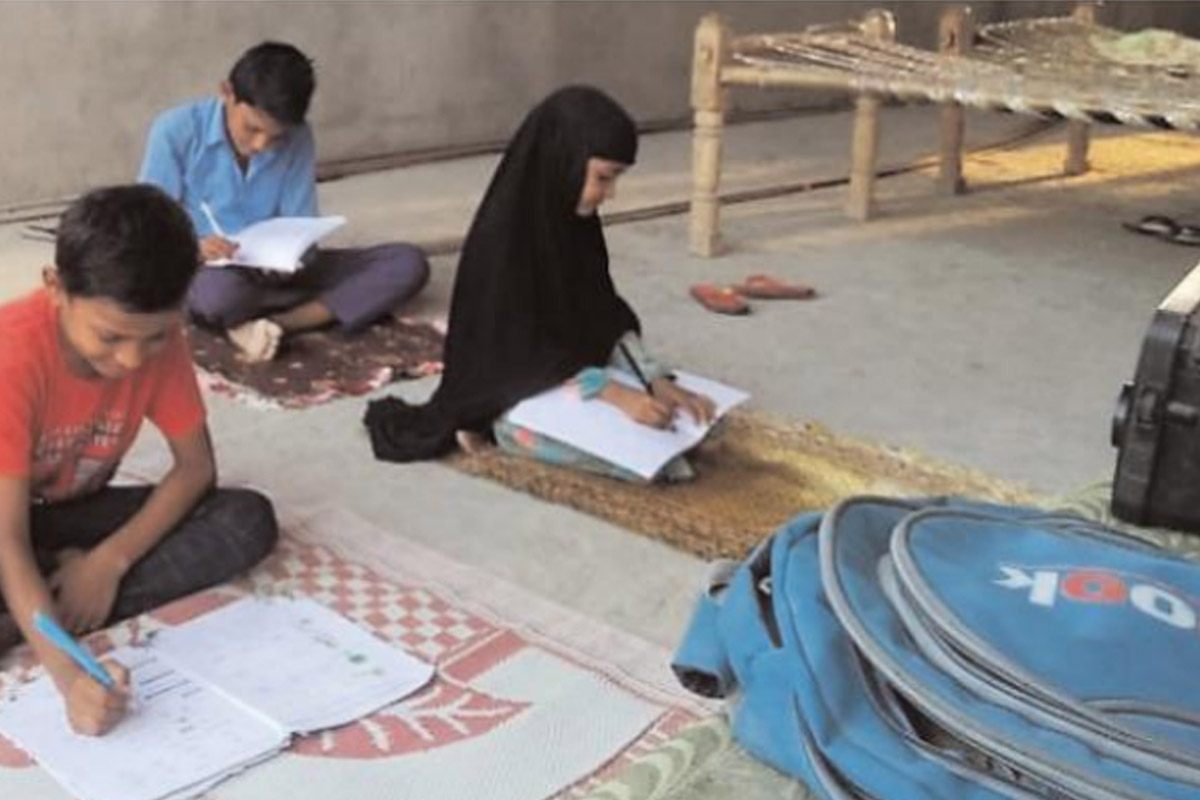A community radio in Nuh district in the Mewat region of Haryana has been helping schoolchildren in their studies during the current Coronavirus pandemic. The “Radio School” programme, started by community radio Alfaz-eMewat, has been the only source of information for a number of children in the villages of this district.
“Radio lessons have proven useful in these times,” says Ravinder, a resident of village Shikrawa and a listener of Alfaz-e-Mewat. “Since charity begins at home, a few radio reporters, whose kids are studying in private schools resorted to radio programmes produced at the station to fill the gap.”
Affirming this, Fakat Hussain, a senior reporter at the community radio Alfaz-eMewat FM 107.8, an initiative of S M Sehgal Foundation — a rural development NGO working in areas of agriculture, water, governance, and transforming schools — said, “I had to rely on the radio programmes we produced at our community radio station for teaching my children.” The programme “Radio School” on the community radio came in handy at a time the community needed it the most, he added.
The “Radio School” programme was started about seven years back with the objective to provide tutorial sessions through subject teachers to students, who cannot afford private tuitions, and also to reach out to community people who have never seen inside of a school classroom, explained Pooja O Murada, a representative of Alfaz-e-Mewat FM 107.8 and SM Sehgal Foundation director. “With changing time and needs, the programme has adopted different methodology to share knowledge, but our aim has remained the same ~ to spread education to all those who seek for it in our broadcast area,” Murada added.
The programme has episodes on the subjects of Maths, English and Science from primary and secondary classes. The government school teachers gave their recordings as part of Dastake-taaleem campaign facilitated by the State Education Department a few years back, along with educational content that the station received from Sesame Street, NCERT and contributions made by several volunteers and interns, Murada said. All these form the content for the radio station, which is being broadcast regularly during the pandemic to make up for the educational loss of schoolchildren.
Nawed, a Class IX student from village Dhadoli, says he listens to “Radio School” programme and also makes his younger siblings hear the episodes on different subjects. The digital divide in urban and rural areas is well known and given the pandemic, education has been severely affected, more so in rural areas. Online education may have become a new normal in urban areas, but in rural areas online education technically means no education. There are multiple constraints, ranging from lack of access to a digital device like smart phones, laptops or computers, to nonexistent high speed connectivity and conducive space for both students and teachers that keep them away from accessing online education.
Ever since the lockdown was imposed, the students in most rural areas have remained out of touch with books and schools. While the online classes started for many private schools, rural schoolchildren had to be satisfied with whatever little came their way through mohalla classes or erratic flow of assignments for school groups.
Mohd. Safi, a government school-teacher from Government Middle School, village Santhawadi in Nuh, shares how his day looks like amid the pandemic with schools shut for students. While following the preventive norms, he conducts a mohalla paathshaala (neighbourhood school) in his village daily with 12 students in one group. He says, “We have two groups in place when there are more students and there is no barrier here, the child can be from any school; government or private. A shiksha doot, graduate from the same village, helps us to coordinate the classes when the teachers are in school preparing for the assignments to be sent.” Safi further adds that assignments are sent on WhatsApp groups for students. His optimistic view makes him believe that students who do not have smartphones, around 50 per cent, keep in touch with their friends to know what is being taught.












